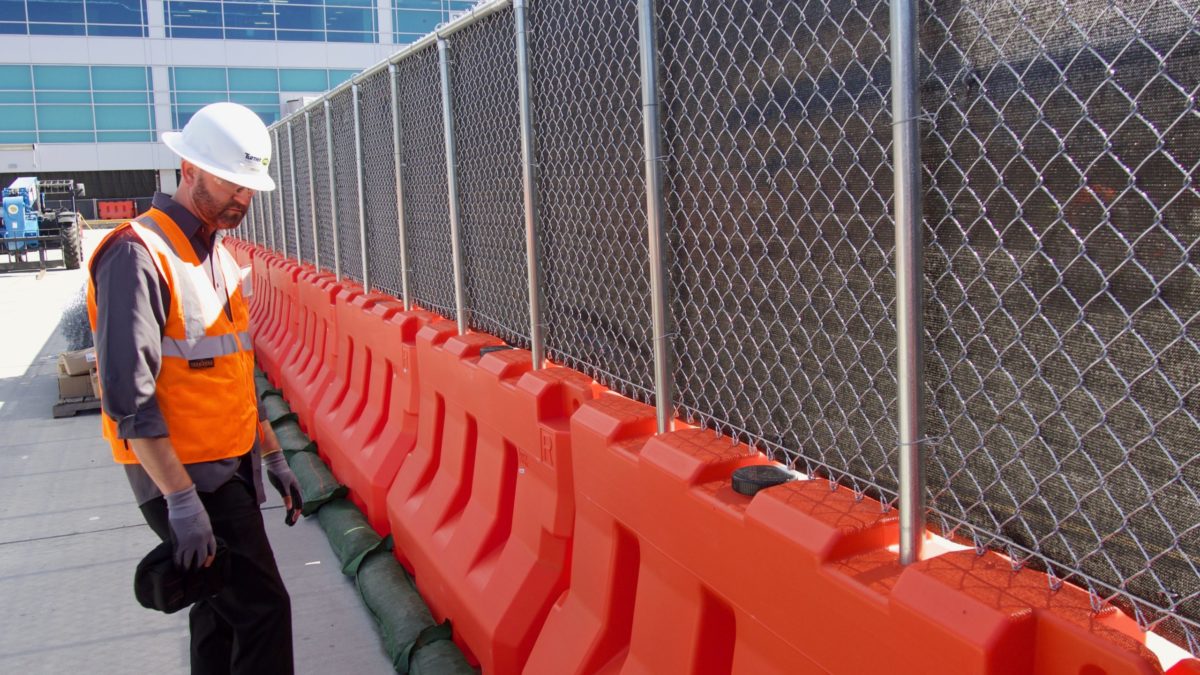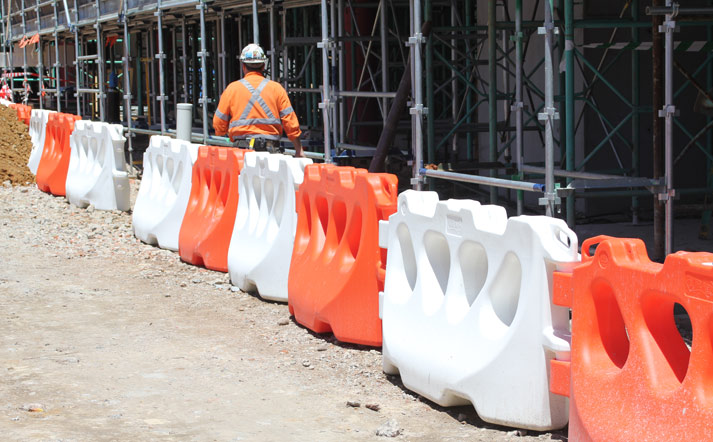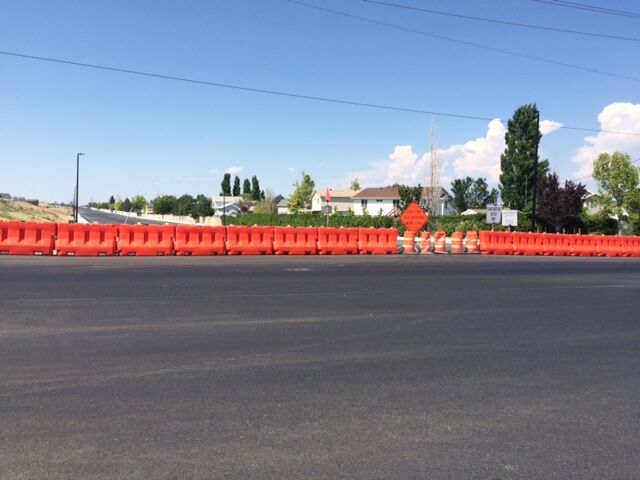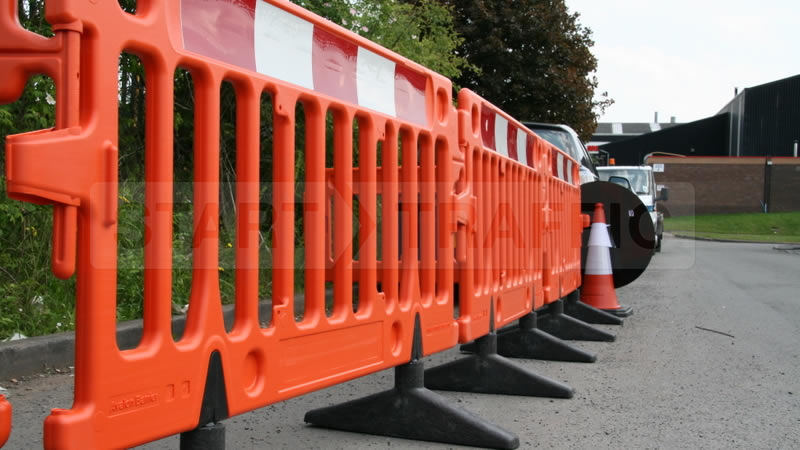Traffic control and safety are top priorities when companies must complete projects near the curb. Companies must work to ensure the safety of employees working on roadside projects, any pedestrians in the area, and all motorists on the road. This means they need field devices that are versatile and effective in preventing or limiting damage from accidents, especially for construction projects that take place on highways or other high-speed areas. With all of this in mind, here are four different types of traffic barriers that construction companies may use in road projects:
 Vertical Channelization Device (LCD)
Vertical Channelization Device (LCD)
Longitudinal channelization devices (LCDs) were originally developed in the early 2000s as an alternative to concrete barriers. Unlike concrete barriers, LCDs are made of high-density polyethylene and are ballasted with water when deployed along the curb. In practice, LCDs mitigate damage from car crashes by absorbing shocks and reducing the G-forces felt by the driver and passengers in the vehicle. In addition, LCDs come in many shapes and sizes, are able to connect to form continuous lines, and are often produced in bright colors—most notably safety orange.
Many LCDs are approved for roadside use in high-speed areas. For example, our 42″ Jersey Shape structural barriers are TL-3 tested and approved.
Concrete barrier
For years, construction companies have relied on concrete guardrails for nearly all of their roadside construction operations. While concrete barriers are very durable and strong, they do pose a number of potential challenges. Concrete barriers are not very portable, so moving and rearranging them in some cases is difficult – if not impossible. Concrete barriers also require a lot of installation time and effort. Also, since most concrete obstacles are gray, they may not provide enough visibility for the driver. Nor do they limit the impact of certain car crashes, such as the next obstacle…
 Traditional plastic/pedestrian barriers
Traditional plastic/pedestrian barriers
In addition to barriers designed to direct traffic and prevent crashes, many construction sites require additional barriers to protect pedestrians. The Jersey Barrier is a good example of a product that is ideal for use in low-speed traffic areas and preventing pedestrians from entering restricted areas. Like their LCD counterparts, these plastic barriers are easy to move, install, disassemble and attach to form a continuous wall.
Other barrier types
Although not often recommended, some roadside projects may require drums and cones to delineate lane changes and designate construction areas. (Of course, a plastic barrier can perform the same function more efficiently.)
Some construction sites may benefit from additional barrier fence panels that can be attached to barricades or LCDs. These fence panels provide an extra layer of security and protection and can also be customized with company logos for advertising purposes.
Contact a professional manufacturer
Finding the right barriers for your next roadside project is essential. Not only do curb barriers provide an important safety measure, but investing in plastic barriers can also help your company save time and money. At VX30 Safety, we specialize in plastic barriers and we will work with you to find the ideal solution for your needs.
Safety barrier
More than ever, traffic barrier systems are a critical part of workplace safety. We use them in a variety of ways to limit pedestrian access to potentially hazardous environments. At events and construction sites, you can also use barriers to prevent cars and other vehicles from entering restricted areas.
When purchasing from the VX30, there is a large selection of safety products, safety barriers, extended, water-filled, Chapter 8, metal, plastic, and more. One thing they all have in common is that they have increased security and have stock ready to ship at great prices.
Roadblock
Water-filled barriers are becoming a very popular road construction barrier and a way to delineate traffic around workplaces. In contrast to heavy concrete units, water barriers are only heavy when filled.
They are a cost-effective solution because they are easier to transport and faster to deploy than concrete. This is because a worker can lift them when empty and then fill them when they are in place. They interlock to form a complete chain, ideal for directing traffic through diversions and reverse currents.

 Vertical Channelization Device (LCD)
Vertical Channelization Device (LCD) Traditional plastic/pedestrian barriers
Traditional plastic/pedestrian barriers